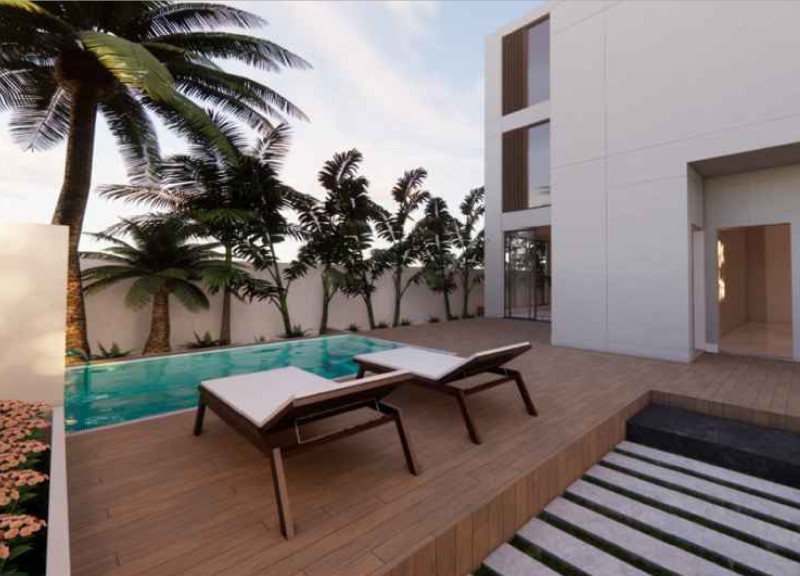5 key facts about this project
Key features include large windows that promote natural light and visual connectivity with the outdoors, enhancing both aesthetics and energy efficiency. The material palette includes concrete, wood, glass, and ceramic tiles, carefully selected for durability, functionality, and sustainability.
Innovative Use of Space
The project stands out due to its innovative spatial organization. The open living areas serve as communal zones, encouraging family engagement. Adjacent to these spaces, the kitchen is designed for both practicality and social interaction, featuring movable components that allow flexibility in use. The arrangement of bedrooms, including a designated area for a master suite, is intended to optimize privacy while maintaining accessibility to shared spaces. This thoughtful layout provides a harmonious balance between social and private living.
Sustainable Architectural Practices
The design employs several sustainable architectural practices. The structure utilizes concrete blocks to ensure durability and stability, while extensive use of glass reduces the need for artificial lighting and enhances thermal performance. Water recycling systems and solar energy solutions further demonstrate a commitment to eco-friendly living. These approaches not only address functional requirements but also aim to create a lifestyle that respects the environment.
To explore the project in greater detail, information on architectural plans, sections, designs, and ideas can provide further insights into the rationale behind this residential design. Engaging with these elements will reveal how the project reconciles contemporary architecture with functional living standards while prioritizing sustainability.


























